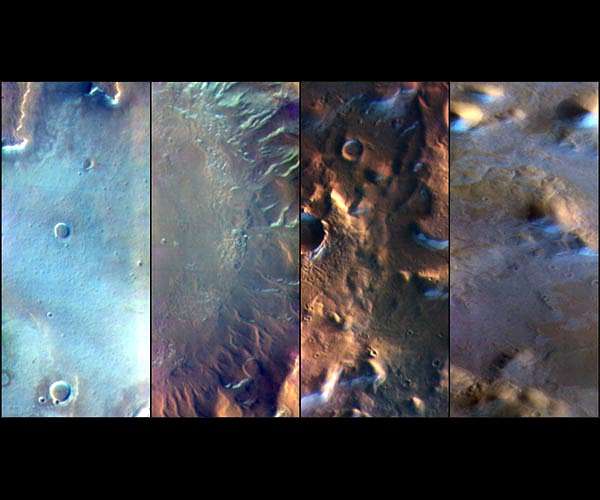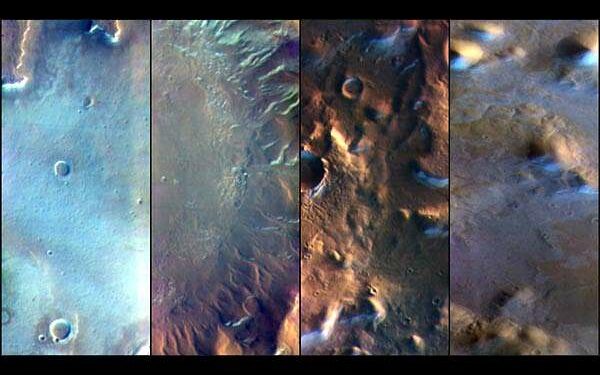
NASA Observes Mars Illuminated During Major Solar Storm
by Clarence Oxford
Los Angeles CA (SPX) Jun 11, 2024
In addition to producing auroras, a recent extreme storm provided more detail on how much radiation future astronauts could encounter on the Red Planet.
Mars scientists have been anticipating significant solar storms since the Sun entered a period of peak activity earlier this year called solar maximum. Over the past month, NASA’s Mars rovers and orbiters have provided researchers with direct observations of solar flares and coronal mass ejections that have reached Mars, sometimes causing Martian auroras.
This series of events has offered a unique opportunity to study how these phenomena unfold in deep space and assess the radiation exposure that future astronauts on Mars could face.
The largest event occurred on May 20 with a solar flare later estimated to be an X12, based on data from the Solar Orbiter spacecraft, a joint mission between ESA and NASA. The flare emitted X-rays and gamma rays toward Mars, while a subsequent coronal mass ejection launched charged particles. The X-rays and gamma rays from the flare arrived first, traveling at the speed of light, followed by the charged particles which reached Mars in just tens of minutes.
Analysts at the Moon to Mars Space Weather Analysis Office at NASA’s Goddard Space Flight Center in Greenbelt, Maryland, closely tracked the space weather and flagged the possibility of incoming charged particles following the coronal mass ejection.
If astronauts had been standing next to NASA’s Curiosity Mars rover at the time, they would have received a radiation dose of 8,100 micrograys – equivalent to 30 chest X-rays. While not deadly, it was the largest surge measured by Curiosity’s Radiation Assessment Detector (RAD) since the rover landed 12 years ago.
RAD’s data will help scientists plan for the highest level of radiation exposure that astronauts might encounter, who could use the Martian landscape for protection.
“Cliffsides or lava tubes would provide additional shielding for an astronaut from such an event. In Mars orbit or deep space, the dose rate would be significantly more,” said RAD’s principal investigator, Don Hassler of Southwest Research Institute’s Solar System Science and Exploration Division in Boulder, Colorado. “I wouldn’t be surprised if this active region on the Sun continues to erupt, meaning even more solar storms at both Earth and Mars over the coming weeks.”
During the May 20 event, so much energy from the storm struck the surface that black-and-white images from Curiosity’s navigation cameras showed “snow” – white streaks and specks caused by charged particles hitting the cameras.
Similarly, the star camera on NASA’s 2001 Mars Odyssey orbiter was overwhelmed with energy from solar particles, momentarily going out. (Odyssey has other ways to orient itself, and recovered the camera within an hour.) Despite the brief lapse in its star camera, the orbiter collected important data on X-rays, gamma rays, and charged particles using its High-Energy Neutron Detector.
This wasn’t Odyssey’s first experience with a solar flare: In 2003, solar particles from a solar flare estimated to be an X45 damaged Odyssey’s radiation detector, which was designed to measure such events.
Auroras Over Mars
High above Curiosity, NASA’s MAVEN (Mars Atmosphere and Volatile EvolutioN) orbiter captured another effect of the recent solar activity: glowing auroras over the planet. These auroras occur differently than those on Earth.
Earth is shielded from charged particles by a robust magnetic field, which normally limits auroras to regions near the poles. Mars lost its internally generated magnetic field in the ancient past, so there’s no protection from the barrage of energetic particles. When charged particles hit the Martian atmosphere, they result in auroras that engulf the entire planet.
During solar events, the Sun releases a wide range of energetic particles. Only the most energetic can reach the surface to be measured by RAD. Slightly less energetic particles, those that cause auroras, are sensed by MAVEN’s Solar Energetic Particle instrument.
Scientists can use that instrument’s data to reconstruct a timeline of each minute as the solar particles passed by, meticulously analyzing how the event evolved.
“This was the largest solar energetic particle event that MAVEN has ever seen,” said MAVEN Space Weather Lead, Christina Lee of the University of California, Berkeley’s Space Sciences Laboratory. “There have been several solar events in past weeks, so we were seeing wave after wave of particles hitting Mars.”
New Spacecraft to Mars
The data from NASA’s spacecraft will not only help future missions to Mars but also contribute to a wealth of information gathered by the agency’s other heliophysics missions, including Voyager, Parker Solar Probe, and the upcoming ESCAPADE (Escape and Plasma Acceleration and Dynamics Explorers) mission.
Scheduled for a late-2024 launch, ESCAPADE’s twin small satellites will orbit Mars and observe space weather from a unique dual perspective that is more detailed than what MAVEN can currently measure alone.
Related Links
Curiosity
MAVEN
Mars News and Information at MarsDaily.com
Lunar Dreams and more
